[ad_1]
Whether you want to sell your idea to your leadership or want a more solidified project proposal backed by proof, we are going to equip you with the tools you need to improve your success. We’ll walk you through step by step what to do before you plan your proposal. You want to find the best way to devise a plan that will support your idea with hard data and approvals will be a breeze. We’re going to talk about how to turn your idea into an opportunity for business growth.
Data is critical for planning – gut feelings do not guarantee successful innovation.
-Kelli Gray, cPanel Product Owner
If you own a business or want to impress your company’s leadership, you have to be creative in your thinking to grow your business into new areas. Seeking out new streams of revenue is a robust way to approach this. If you are reading this article, you probably already have an idea for a new product or feature you would like to build enhancements for. Hold onto this idea while we teach you how to make a proposal backed by data around it. This may be a product or feature that you would like to use to enhance your business. This guide will equip you with the tools you need to improve your success.
Basic Points of Understanding Before You Begin Your Research
As you embark on this journey to investigate a new product for your business, there are two basic principles that you must understand. These statements should inform your choices moving forward:
- Intuition Does Not Guarantee Successful Innovation
- Leading Questions are the Path to Failure
As we explore the four steps to identify your business needs to develop a proposal, we’ll come back to these basic principles but keep them in mind as you read through the steps.
4 Steps to Identify Your Needs
For yourself, as you build your proposal, there are four things you need to do. We’ll go over each step-by-step in more detail, but to turn your idea into an opportunity you need to:
- Remove bias
- What’s the problem you are trying to solve
- Identify your assumptions
- Validate your assumptions
Removing Bias
All human beings have biases. Identifying biases and assumptions work hand in hand when developing a business plan or proposal. It can be challenging to eliminate them from our everyday lives, but especially when it comes to business, we must remove biases from our planning. As we found in our first lesson learned from this project, we can’t just trust our gut because of these biases. One of the simplest ways to address bias is to ask questions and have discussions with colleagues and subject matter experts, especially those who have a differing perspective from yours because making guesses based on intuition instead of data will hinder your success. Develop a questionnaire about your idea, choose an audience to query with the survey. Your audience could be existing clients, prospective clients, or any other group your product idea will serve. The questions will help you find out what they think about it so you can examine elements of study from multiple angles to find the best solutions.
Identify the Problem Your Product Will Solve
- Select questions to create a survey about your idea
- Who is helping?
- What are they doing when they encounter the issue you want to solve for them?
- What kind of income do you think they are making?
- Build a Journey or Story Map
- Evaluate if you need a survey
- Create and validate your survey, ensuring you are not using leading questions
- Analyze the results
Asking questions will be the most helpful tool in identifying the problem that your idea could potentially solve. In addition, journey building and story mapping also help you connect with the target audience you think this project will serve. When you’ve decided what questions to ask, it’s time to initiate surveys to gather demographic research to provide the data to validate your goals for the project. It’s important to test your assumptions with questions because if you don’t, you can build a project that just isn’t the right fit for the product, and could cause it to fall short. Our goal, in the long run, should be solving problems that the target audience needs to be solved, and one they find valuable and for which they are willing to pay.
Identify and Validate Your Business Needs vs. Assumptions
To work and plan for the future, we have to make a certain amount of business assumptions. Common business assumptions are often relating to money, customer needs, resources available, and legal aspects of the work. Creating a survey and asking the right questions will ensure that we are validating our business assumptions with data.
This article from Medium with an Assumption/Validation Flowchart may help you to dive deeper into this concept. Essentially, you need to identify where the assumptions are in your plan, research them, test them, compare them, and then lather, rinse repeat until you’ve examined all your assumptions to create a product that you know users need, want, will pay you for, and will use.
Intuition Does Not Guarantee Successful Innovation
This basic premise is especially important when we’re talking about technology. Technology changes rapidly, with new, innovative ideas and products and processes joining the hosting market every day. People are slower to change, and that will influence their decision making. Not all companies have the same views on data-driven decisions, and you might find yourself asking how you can make a change if gut feelings have historically been rewarded with success in your business. One of the best ways to approach this is to change your leadership’s minds by filling your business proposal with facts backed by data.
Leading Questions are the Path to Failure
How you write the questions to obtain your data is extremely critical. Take care not to write them in a way that is likely to provide you with the answer you think you want, write them to be open-ended so your research base can provide you with honest feedback. Leading questions in your data gathering could push your project in the wrong direction and sink your profits before you get off the ground.
Leadership’s needs in your business proposal
Your company’s leadership has a responsibility to make decisions that are intelligent and visionary and will improve the value of the company and its products in the eyes of their customers. To evaluate any proposal, they will request to review information relevant to the proposal, including the five items on this list:
- Introspection: What competitors say about themselves
- Extrospection: What the public says about competitors
- Feature comparison of competitors
- Price comparison of competitors
- Potential pricing/Break-even analysis
They will most likely ask the following questions: How does this proposal fit into the existing market? How does it compare to other offerings? How long will it take before the company breaks even from this investment? These are questions you should be prepared to answer when you present your proposal to your leadership.
Looking Deeper
Introspection and Extrospection. These words are two sides of the same coin. Introspection is looking within, at one’s self, a reflective looking inward, while extrospection is the observation of things external to one’s self. In a business context, we can use these terms to examine what we say about ourselves as a company and who we are, and what the public says about us as a company, and who we appear to be. Looking at the introspection and extrospection of our competition can also be useful.
Using competitive analysis, you can analyze the behavior and strategies other companies have used to bring additional products to market. It will help you to identify differentiators in the market across these potential competitors. Creating a comparison chart of these potential competitors is especially useful in determining where you may be able to target an underserved need. Compare features, pricing, and other benchmarks that are relevant to your concept. Once you’ve completed all of this, you can make a projection that includes potential pricing to determine through an analysis where your break-even point might be to start to turn a profit on your idea.
In Conclusion
Whenever you’re looking to expand your existing business to develop a new product opportunity, the most important thing is to keep an open mind and avoid bias. Remember that data is critical for planning – gut feelings do not guarantee successful innovation, so back them up with data before you move forward. And don’t forget that leading questions are the path to failure, so make sure that when you’re developing your questions to survey the needs of your customer base, you don’t write them in such a way as to lead to the result you assume is best. Keep them neutral, so you get the most direct, honest feedback from users to develop the product that best solves the need.
Special thanks to Kelli Gray, Product Owner, whose talk at cPanel LIVE! inspired this article. We would love to hear your thoughts. If you have any feedback or comments, please let us know. We are here to help in the best ways we can. You’ll find us on Discord, the cPanel forums, and Reddit. Join the conversation!
[ad_2]
Source link






